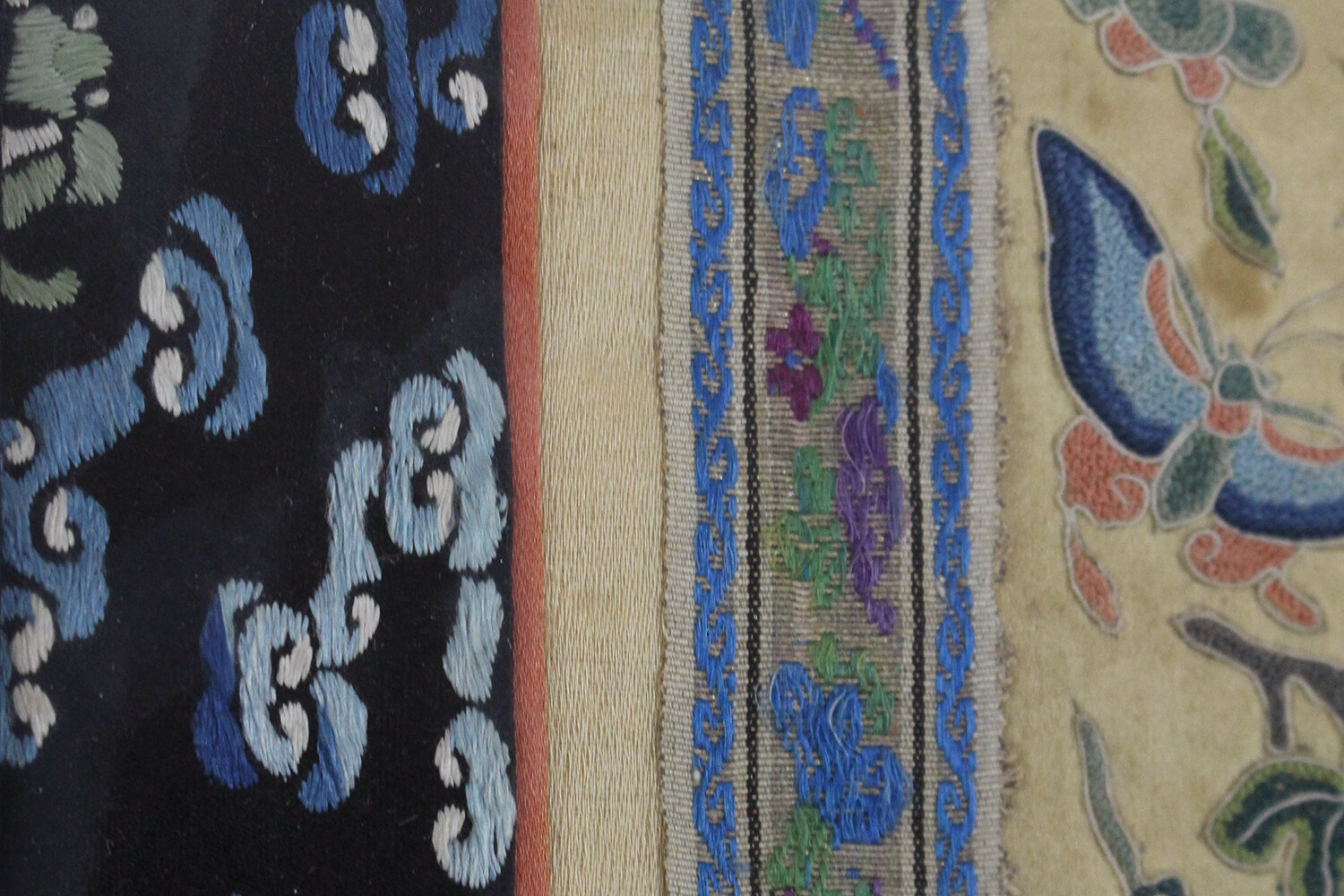Pair of embroidered sleeve bands encased in frame, decorated with forbidden stitch
Size: 27 x 14 ¼ in (with frame 27 ¾ x 15 in)
B19705
uno@langmann.com
604 736 8825 or 1 800 730 8825
The Forbidden Stitch is known as the 'French Knot' or 'Seed Stitch', and also named the 'Peking Knot'. It is rumoured that working this stitch made the seamstress blind therefore the government forbade it, but it is likely that it is named after the Forbidden City. The term refers to small knots stitched on the fabric surface by wrapping a heavy embroidery thread, usually silk floss, around a needle and stitching it down. This is achieved with varying degrees of complexity. The stitch resembles a minute circle and is formed by winding thread around an embroidery needle three or four times, then plunging it through the middle of the coil and fabric form. The stitches are massed together to form decorations (usually in the form of plants, flowers, birds and butterflies) to cover a large area. The stitch was used for exotic costumes and textiles, including lavish robes and lotus foot slippers. The art vanished with the Qing Dynasty in 1911 when these ceremonial items became obsolete.



